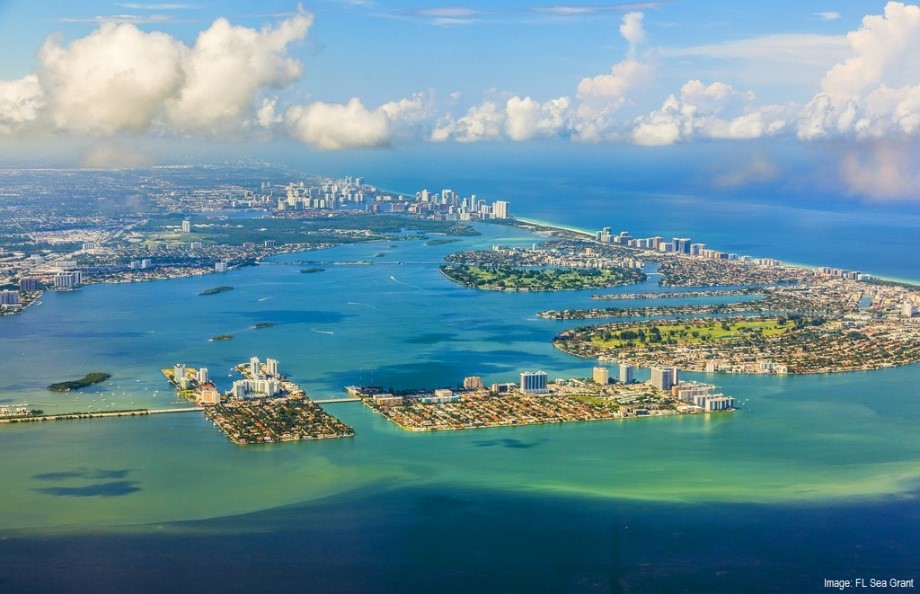 How do I control public access?
How do I control public access?
Florida localities, the state, and the federal government can regulate in ways that address coastal access.
Regulation may take the form of zoning, harbor management, marine spatial planning or environmental regulation that protects coastal resources. Regulation is best used to limit the types of development that are either incompatible with access, or displace uses that have historically provided access
While creating and enforcing regulations is unique to the government, knowledge of the planning process will enable interested parties to lobby for effective regulations and plan for the future of their localities.
Governments have authority to use their regulatory power on behalf of the public, with restrictions. The legal doctrines involved include police power, the common law Public Trust Doctrine, and the protection of private property provided by the “takings” clause of the U.S. Constitution.
What planning processes exist for securing access in coastal communities?
- Comprehensive planning
Florida’s Growth Management Act requires all of Florida’s counties and municipalities to adopt Local Government Comprehensive Plans that guide future growth and development. In Florida, comprehensive plans are required to have chapters, or “elements” that address topics such as Coastal Management and Recreation and Open Space. These topics address public access to coastal waters as well as recreation activities common on Florida’s beaches. For more information on Comprehensive Planning, contact your local planning department or Regional Planning Council. Click here for a list by region.
- Shoreline Access Planning
Coastal communities can undertake public access studies and analyses to document the need for improved and enhanced access, locate potential access sites and facilities, and undertake projects to acquire and develop access to coastal waters. Planning grants may be available from the Florida Coastal Management Program in concert with your local planning commission.
The Florida Coastal Program, approved by NOAA in 1981, is comprised of a network of eight state agencies and five water management districts, together enforcing 23 separate statutes. The Florida Department of Environmental Protection serves as the lead agency. The Florida coastal zone is the entire state but the coastal zone is divided into two tiers. Only coastal cities and counties which include or are contiguous to state water bodies are eligible to receive coastal management funds.
The Coastal Program works to protect coastal resources and help Floridians build and maintain vital communities. Through the Coastal Partnerships Initiative, the Coastal Program provides support for enhancing coastal access, promoting stewardship, protecting remarkable coastal places, and revitalizing working waterfronts. Waterfronts Florida, a program initiated in 1997 by the Coastal Program, provides support, training, innovative technical assistance, and limited financial assistance to communities striving to revitalize and renew interest in their waterfront district, areas which have a tradition of water-dependent vitality. See Section 342.201 of the Florida Statutes.
What is zoning and how can it be used as an incentive for protecting access?
Zoning is a tool for assisting localities to plan how various geographic areas (zones) are restricted to certain uses and development, such as water-dependent use zoning or marine spatial planning. By preventing certain uses, zoning can ensure that some land remains open for access or for the possibility of being acquired for access. Also, zoning can help prevent residential uses from competing with marine uses. Exception to zoning restrictions can be negotiated in exchange for a public good, such as a public boat ramp or path to the shore. See Zone for Access.
How do environmental regulations address coastal access issues?
Environmental regulations, such as habitat protection and storm-water runoff regulations can impose restrictions that affect access use. Regulations can be crafted to include access as a compatible use, but exclude other uses that might restrict access. These differ from zoning in that restrictions cannot be contracted out of or negotiated away.
What kinds of ordinances can be used to address access needs?
Ordinances can be used in many ways to address access needs. For example, a boat ramp might have quiet hours overnight (a sound control ordinance), thereby protecting the rights of the nearby landowners, but minimizing how the ramp can be used at night. Or, a river can have restrictions on a vessel’s use, such as speed, anchoring and moorage. Light pollution ordinances can also affect access.
What are other regulatory options?
- Rediscovery of Public Rights-of-Way
Over time, cities, counties, and towns often lose track of the location, bounds, and uses of existing public rights-of-way or access points. Abutting landowners may encroach on a public way, or challenge people using the way. The Florida Department of Environmental Protection, as the lead agency under Florida’s Coastal Management Program, has the ability to assist participating localities with research needed to re-establish, acquire and defend existing public ways to coastal waters.
